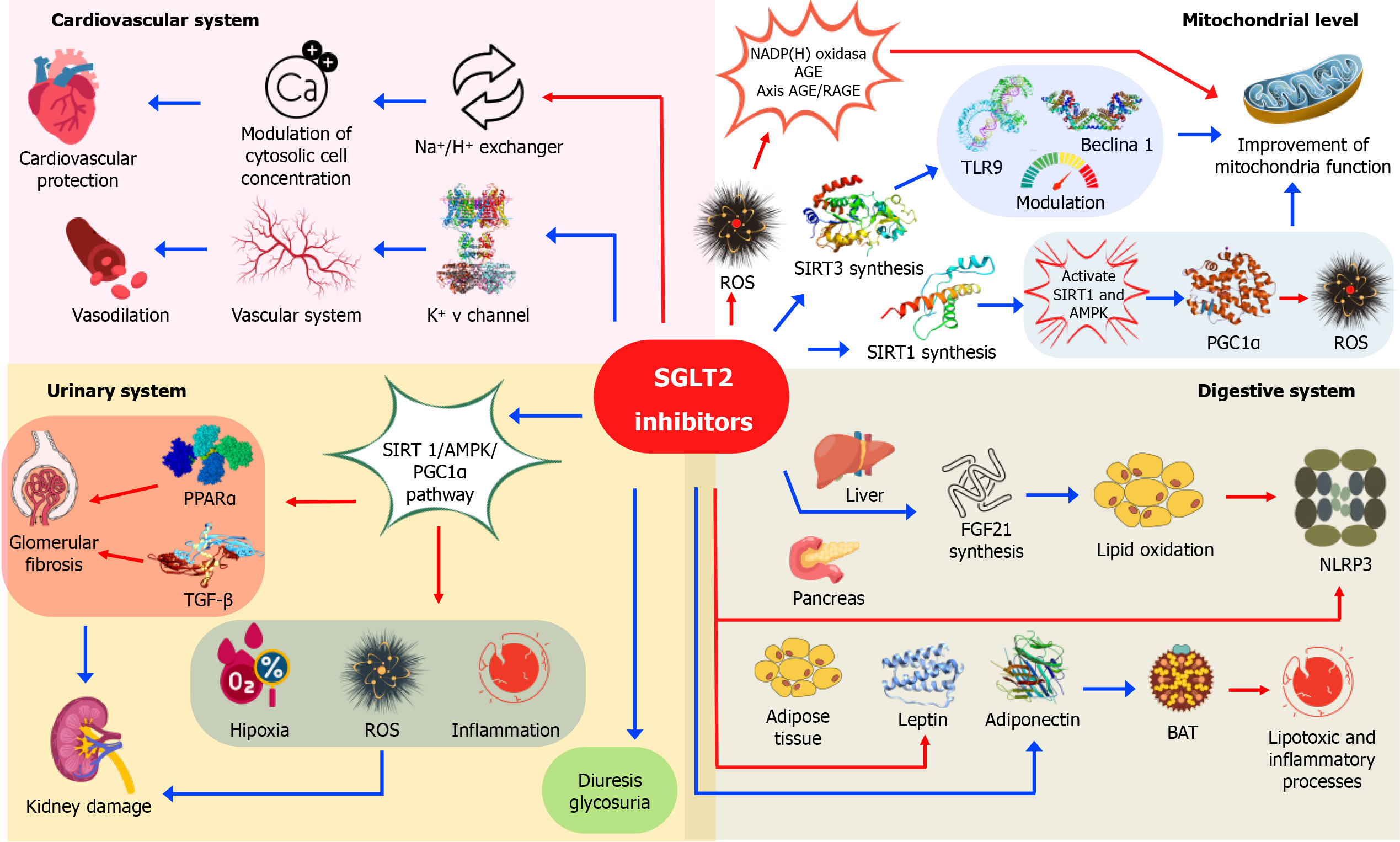Copyright
©The Author(s) 2024.
World J Exp Med. Jun 20, 2024; 14(2): 91519
Published online Jun 20, 2024. doi: 10.5493/wjem.v14.i2.91519
Published online Jun 20, 2024. doi: 10.5493/wjem.v14.i2.91519
Figure 1 Graphical overview of the beneficial effects of sodium-glucose cotransporter-2 inhibitors across various systems and at the mitochondrial level.
These actions include modulation of cardiovascular function, improvement of renal function, and enhanced insulin sensitivity. Furthermore, sodium-glucose cotransporter-2 inhibitors improve mitochondrial function, thereby reducing oxidative stress in different cells and their inflammatory responses. Blue arrows indicate stimulation, while red arrows indicate inhibition. AGE: Advanced glycation end product; AMPK: Adenosine monophosphate-activated protein kinase; BAT: Brown adipose tissue; ERK: Extracellular signal-regulated kinase; FGF21: Fibroblast growth factor 21; NADP(H): Nicotinamide adenine dinucleotide phosphate; NLRP3: Nucleotide-binding oligomerization domain-like receptor protein 3; PGC1α: Proliferator-activated receptor gamma coactivator 1 alpha; PPARα: Peroxisome proliferator-activated receptor alpha; RAGE: Advanced glycation end product receptor; ROS: Reactive oxygen species; SIRT: Sirtuin; SGLT2i: Sodium-glucose cotransporter-2 inhibitors; TLR9: Toll-like receptor 9.
- Citation: Sanz RL, García Menéndez S, Inserra F, Ferder L, Manucha W. Sodium-glucose cotransporter-2 inhibitors protect tissues via cellular and mitochondrial pathways: Experimental and clinical evidence. World J Exp Med 2024; 14(2): 91519
- URL: https://www.wjgnet.com/2220-315x/full/v14/i2/91519.htm
- DOI: https://dx.doi.org/10.5493/wjem.v14.i2.91519













